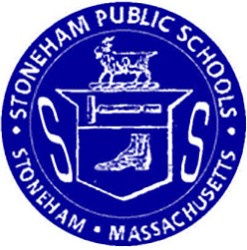
Stoneham High School
149 Franklin Street Stoneham, MA 02180
Project # 2515
Emergency Response Plan
SITE INFORMATION
This Emergency Response Plan (E.R.P.) is specifically developed for Consigli Construction work associated with the Stoneham High School project.
SITE LOCATION
The construction site is located on at the Stoneham High School. The address for project is 149 Franklin Street Stoneham, MA 02180 The location for the project field office is currently in the building (notifications of any changes will be provided). When determined, the field office will become the Emergency Operations Center (EOC).
EMERGENCY TYPE
The following situations are considered emergency response actions and should be handled in accordance with the procedures outlined in this plan.
- Serious Injury/Fatalities
- Fire/Explosion
- Structural Damage/Collapse
- Weather or Geological Event
- Environmental Incident
- Traffic Disruption
- Utility Damage
- Illegal Activity
- Labor Problems
- Bomb Threats/Military Ordinance Unearthing
- Acts of Terrorism
The following is a list of the Chain of Command/Call Hierarchy for establishing lines of succession during communication involving all emergencies.
Back– End of Emergency Response Plan
Emergency Contact Names and Numbers
1. First call: 911
2. CCC Superintendent: Justin Bolla (774)573-1586
3.CCC PM: Steven Banak (774)737-3322
4. CCC Project Executive: Todd McCabe (508)294-0960
5. Owner Project Manager: Robert Smith (978)303-7764
6. CCC Safety Director: Bryan Kingsbury (508)808-9359
Additional Consigli Construction Contacts:
- CCC Safety Manager: Eddy Pellerin (508)962-3974
- CCC General Super: John Laperle (508)400-4850
City of Stoneham
Stoneham Police Department- Non-Emergency (781)438-1215
Stoneham Fire Department- Non-Emergency (781)438-0127
Stoneham DPW/Water/Sewer Department (781)438-0760
NSTAR Gas Co. (800)592-2000
Dig Safe 811
Telephone-Verizon-(local) (800)870-9999
Note: If any utility is struck/damaged, 911 must be called immediately!
Environmental Consultant
FS Engineers
(978)274-2830
42 Nonset Path, Suite 42-1 Acton MA, 01720
Back– End of Emergency Contact Names and Numbers
Medical Facilities
OHS Total Care
(866)510-3002
1340 Soldiers Field Rd Boston, MA 02135
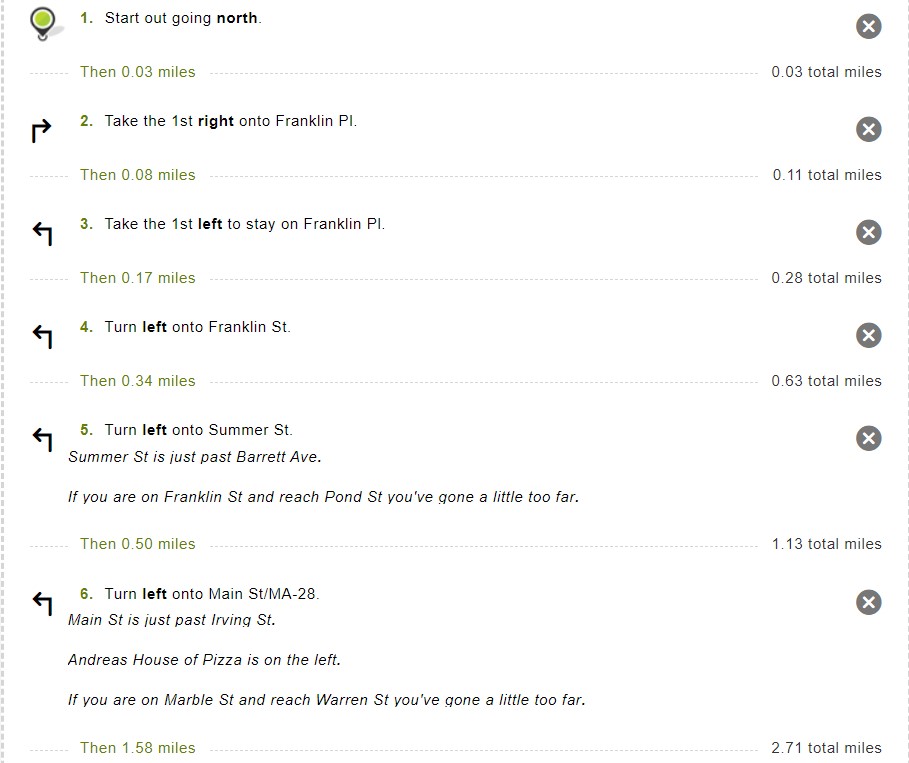
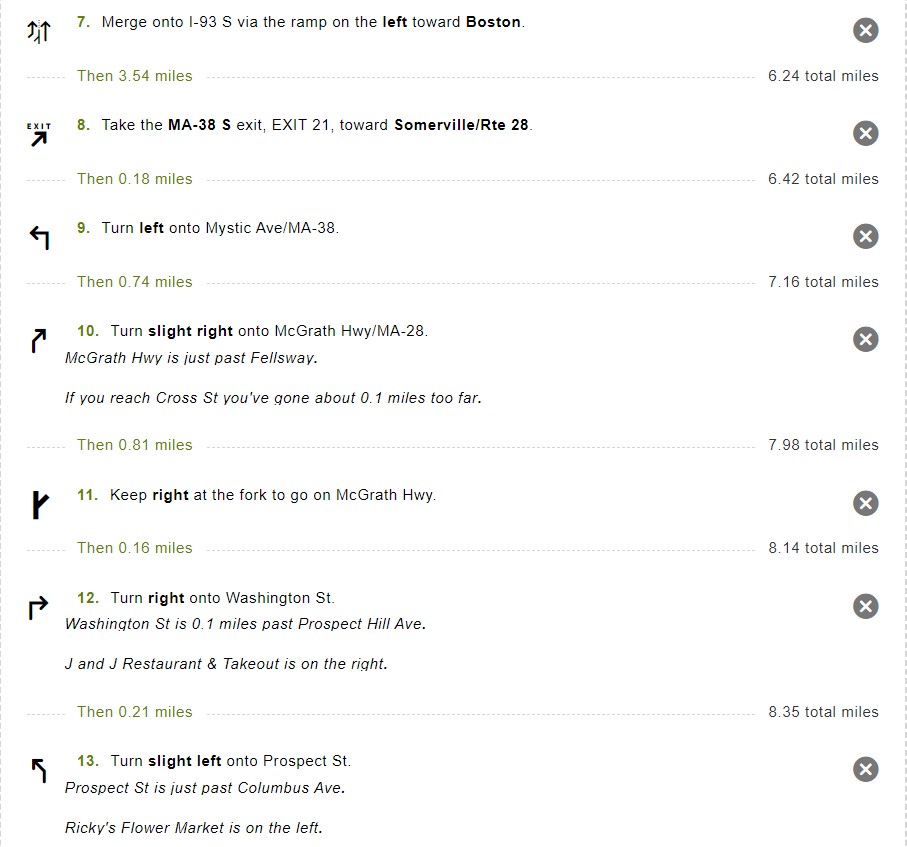
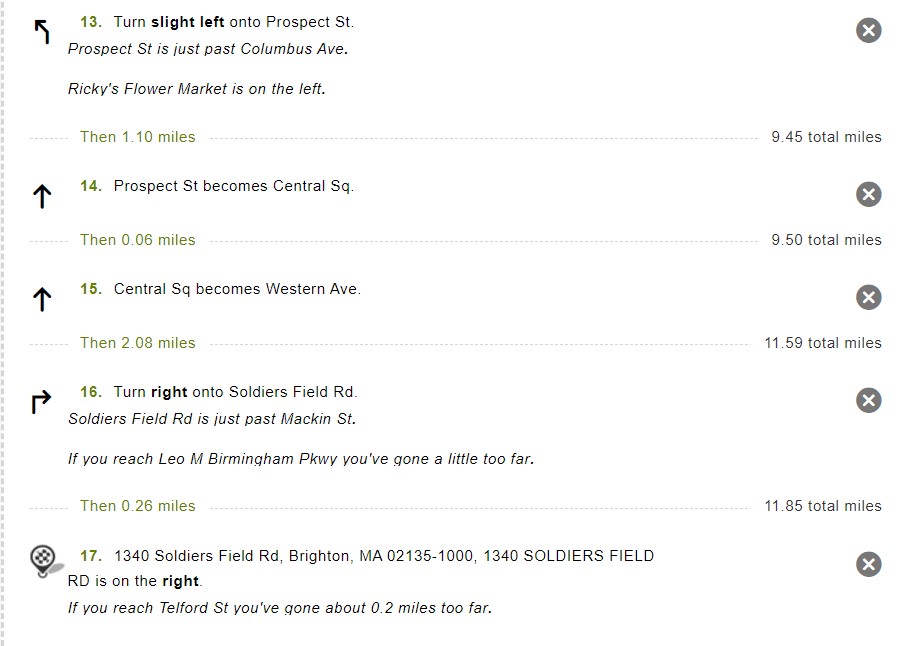

Winchester Hospital
(781)729-9000
41 Highland Ave Winchester, MA 01890
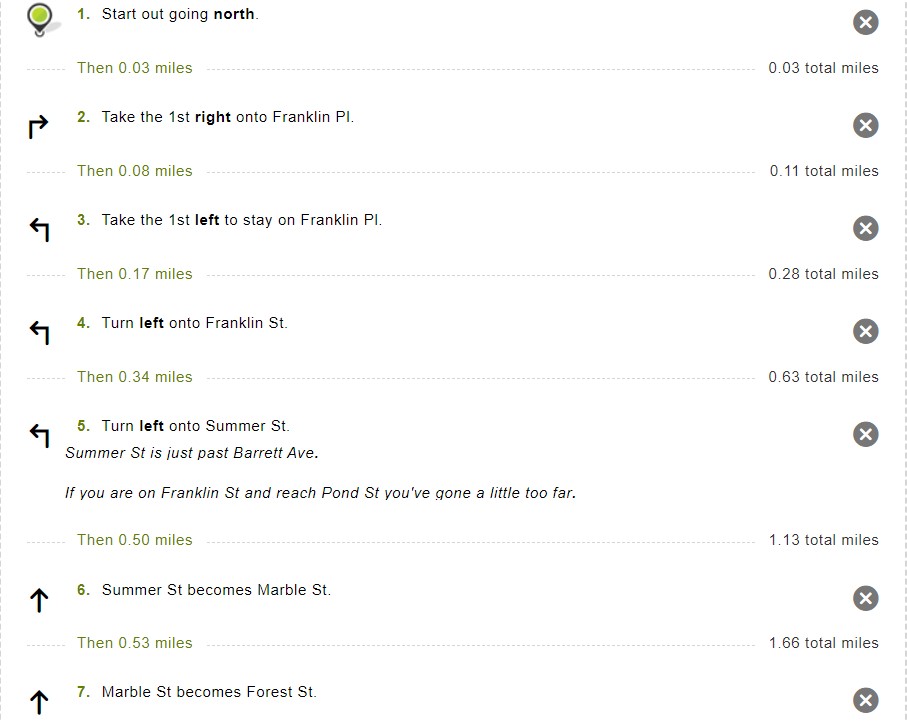
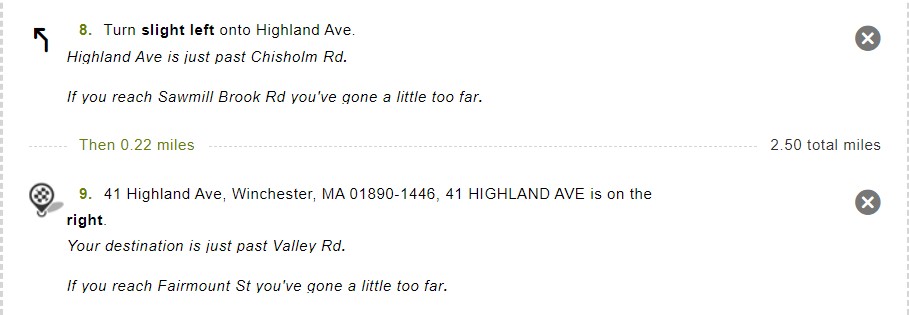

Emergency Response and Rescue
In the event of an emergency the following policy will be adhered to for the safe evacuation of the Project. An immediate call will be made to 911. Project information for the call is –Stoneham High School @ 149 Franklin St, Stoneham, MA. (Note: If calling from a cell phone you will be reaching the State Police and not the local emergency response)
A Consigli representative will be dispatched to the Main entrance of the building (or work area, as necessary) to meet the responding Emergency Personnel and advise the individual in charge of the location of any chemicals or hazardous substances that may be present on any of the floors. Safety Data Sheets will be provided if needed by the Fire Dept.
In the event of a serious injury requiring the assistance of EMS the injured worker will be kept as comfortable as possible. Emergency first aid, if necessary, will be administered. Under no circumstances will the injured person be moved unless the worker’s life is in danger because of fire or calamity. A worker will be assigned to meet the medical personnel at the above location to direct them to the location of incident.
In the event an evacuation is required all personnel at this job site will follow the building/site evacuation plan and meet at the designated Muster Point gather in front of the office trailer located next to the main gate of the site. their staff and report to Consigli Superintendent. If for some reason a worker is unaccounted for, the fire department will be notified of the last location where the worker was observed.
Back– End of Medical Facilities
Site Safety Plan
Scope of Proposed Operations: This project will be starting early summer 2022 with a completion date of end of summer 2025. At its peak, it will have up to 130 plus workers representing several different trades and will take place at 149 Franklin Stoneham MA. The project will consist of the building of a new 207,827 SF High School. This building will consist t of new concrete footings and walls, steel structure, poured in place concrete slab, masonry, windows and curtain walls, life safety, roof, roof top units, typical electrical, hvac and plumbing finishes. Interior finishes will consist of sheet rock walls, acoustical & hard ceilings, flooring (tile/carpet) finishes. Site work will consist of new drain, sewer and site drainage, typical landscaping finishes to wrap up the job. After completion the existing 221,000 SF High School will be bated and competed demolished to make room for new parking and field areas.
PURPOSE: The purpose of this Site-Specific Safety and Health Program is to illustrate Consigli’s approach to identifying project specific hazards and controls and how said risk is managed through a comprehensive Safety and Health Program.
S.A.F.E.: Staying Accident Free Every Day is the Safety Mission that forms the very foundation of the Consigli Safety Culture. The S.A.F.E. mission, which is supported by technology, (Predictive Solutions internal auditing instrument which identifies and defines leading indicator related information); Leadership (Empowering our team members to assure safe projects); Humanization (Protect the ones you love by protecting yourself); Jobsite Gym (Morning warm-ups, jobsite gym); Training (Integrating sub-contractors into the Consigli Safety Culture); and Lean (nothing hit the ground), is the driving force behind Consigli’ s drive to our vision – ZERO. ZERO is the philosophy that all accidents are preventable, and that no accident is acceptable. The S.A.F.E. mission is the guiding force to achieving the Consigli Safety Vision which is ZERO.
Post Incident Review: Any CCC incident that results in a recordable injury will require a post incident review. The worker who was injured along with their foreman/Safety Personnel/PM/Sup/etc… will need to fill out Appendix?? (Post incident review form) and attend this meeting. At this meeting they will re-emphasize their commitment to safety, determine chronology of events, identify contributing factors, identify root cause, provide improvement plan to prevent reoccurrence and discuss disciplinary actions taken (if any). Findings from this meeting will be shared/disseminated with all contractors on site and other CCC projects to prevent reoccurrence.
Contractor Orientation: All workers on-site must complete the Consigli site orientation training by watching a video and displaying the orientation sticker on their hardhat once orientation is complete.
Identify the specific route in and out of the construction site (Traffic Management): Main construction access will be restricted to routes pre-determined by Consigli. All contractors will be responsible for adhering to CCC restrictions and regulations in regard to driving and delivering materials. All material and debris will process through the laydown yard located on the Oak Street side of the project. All personnel will access through the emergency department. Pedestrians will be given the right of way at all times. Parking will be designated in pre-determined contractor parking locations and reviewed during orientation.
Designated work hours (any work outside these hours must have prior CCC approval): All work shall take place during business hours, Monday – Friday 7:00am to 3:30pm, any work which may need to take place outside of these hours will need to be approved by the CCC Superintendent.
Exposure to the Visitors, Staff, and Students: During all phases of construction, the buildings and pedestrian walkways in the surrounding area will be open and occupied. Some areas of project will be under construction at different times; the phasing plan must be followed by all workers. Access routes used by the workers for moving materials and debris will be communicated to the workers and updated as needed. At no time is any worker allowed to enter any of the adjacent occupied building/spaces unless they have received approval from CCC. Non-fraternization with staff, visitors or public will be stressed with all subcontractor personnel during orientations.
Activity Hazard Analysis (AHA): An AHA/JHA depending on level of hazard shall be conducted for each identifiable feature of work to be performed. The AHA/JHA shall be submitted to Consigli superintendent/supervisor. AHA/JHA shall be reviewed weekly, signed by all workers including their supervisor, with all involved personnel performing that particular task.
Excavations: All required permitting will be obtained before any excavating is to begin, tabulated data/engineering for shoring and shielding systems will be on site at all times when in use. Written excavation inspections will be done daily.
1. Dig Safe Notification.
2. City/town (dpw or town hall) or campus permits requirements if needed.
3. Jackie’s law permitting has been obtained.
4. All road plates that will be in pedestrian walkways will be slip resistant
Workers preforming site work will be make sure to remove all underground tanks mentioned in site report per all MA and state guidelines.
Note: All water pumped off the site cannot be discharged anywhere other than the job site. (See dewatering plan)
Demolition: Prior to the start of demo operations, the contractor preforming demo will confirm that all utilities leading into the area have been made safe. The electrician will disconnect and lock out all electrical, the plumber will do the same with any plumbing lines, and the HVAC subcontractor will do the same on the HVAC piping and duct work. Lock out tag out will be reviewed during the pre-construction safety meetings to assure disconnect and responsibility for protection of existing utilities is safe for any construction activities to commence. In spaces where some electrical or mechanical must remain live, a color-coding system will be utilized for easy identification of live utilities that must stay active and utilities that must be removed. Any and all utilities spay painted Red are not to be touched and are needing to be protected during all operations. Utilities spray painted Green are to be removed as part of the selective demolition process only after lock-out/tag-out has been confirmed and utilities tested. If any utilities are unmarked, they shall be considered live. The demo contractor will be responsible for completing CCC demo checklist prior to the start of any work in their target areas.
Fall Protection: All workers exposed to a fall of 6′ or greater shall be protected by guardrails safety nets or personnel fall arrest systems. this include, but is not limited to, steel erection, roofing, scaffold erection and dismantling, overhand brick laying and pre-cast concrete related work. Holes greater than 2” will be covered with acceptable material (3/4 plywood ½ steel) which will be secured and marked hole and capable of supporting 2x the intended load (cover must be able to withstand 2x times the intended axle load). Covers will stay in place until the hole/penetration has been filled with duct or Pipe riser which extends above the deck. Building perimeters (to be protected with cable guard rail system with turnbuckles to be installed for all straight runs and any straight run over 100 feet. Before any work is to begin on the roof it must be determined what method of fall protection will be implemented All workers working on a roof with a slope greater than 4 to 1 and exposed to a fall greater than 6 feet will have fall protection 100%of the time spent in this location. Workers on a roof with a slope less than 4 to 1 may put flagging (six feet for roofers-15 feet for everyone else) lines up, whenever roofers and any other trade are on the same roof then the flagging must be pulled back to the maximum distance. All subcontractors will be responsible for barricading/taping off areas below their elevated work. The use of safety Monitors is not allowed!
**Review Chapter 13 for more detail
Roof Work: Before any work is to begin on the roof it must be determined what sections of the roof will be worked and what method of fall protection will be implemented. Attention will be paid to any access points located below elevated work. If present, they will be protected. (100% tie off, guard rails, flagging etc. the use of safety monitors is not allowed)
Work on Ladders: All work on step ladders/straight ladders will be done correctly per manufacturer’s recommendations. Any worker who is on a step/straight ladder and could be exposed to a fall greater than the height of their work on the ladder will be required to install a form of fall protection. Step ladders will not be used as a form of access to a walking /working level, also all straight ladders will be tied of when installed for use. Only ladders with a rating Type 1A or 1AA will be allowed on Consigli projects.
Scaffold and elevated work platforms: All scaffolds supported frame, pipe staging, and Aerial lift platforms will be inspected daily before each shift by a competent person designated by each individual contractor who will be using it, which will be documented on Inspection tags located at the stair tower to each section… A scaffold checklist will be provided by CCC to each sub contractors designated persons to aid them with their daily inspection. All contractors who will be erect scaffold will provide CCC with certification/Qualification of scaffold erection training as well as an erection/dismantling plan. Fall protection is required 100% during erection/dismantling. Overhead protection will be provided for all access points at any buildings which are located under any form of scaffolding. Fall protection is required at 6’ on all scaffolds, on mobil scaffold fall protection is required at 4’. Mobil staging with a work platform with a height to base ratio greater than two to one will require outriggers.
** Please review chapter 14 for additional details.
Aerial/Scissor Lifts: If lifts are required, the area and ground conditions, in the intended work area, will be inspected for overhead power lines, sink holes, covers, or any other unsafe conditions which cause an unsafe incident. Aerial lift platforms will be inspected daily before each shift by a competent person designated. All who will be performing work from an aerial lift will show documented proof of training prior to using the lift. Steel plates or equipment mats will be placed on the ground above any utility/ steam tunnel if there will be Aerial lifts operating on them. Workers will be tied off at all times when using an aerial lift.
Global Harmonization: All Materials and chemicals used on-site will have Safety Data Sheets (SDS) provided before being brought onsite.
- SDS sheets on file in Consigli Construction’s Site Safety Plan
- All SDS sheets shall be readily accessible.
** Please review chapter 20 for additional details.
Fire Protection: Fire protection will be addressed with the sprinkler heads being turned up when the ceiling is removed, and the existing smoke detectors will be replaced with heat detectors. Limited hot work is anticipated, and efforts will be made to reduce the need for on-site hot work. If, however, any hot work is required the Consigli hot work permit program will be implemented. This will be coordinated through Consigli Construction, building staff and local Fire department. (If needed). All hot work will stop one hour before the regular end of the day work stoppage. Flammables will not be stored inside the building or left overnight on the scaffold or in the building. All combustible or flammable materials will be stored in an appropriately rated lockable cabinet located no closer than 50 feet from the nearest structure. Fire extinguishers will be provided for every 3000 square feet. They will be installed on job made stands and conspicuously located throughout. They will be part of the daily inspection with extinguisher log completed monthly. Storage of any acetylene cylinders will be done in a secure and upright area, with good ventilation. This will be a strict no smoking project. All penetrations leading outside of the construction area will be fire stopped using approved fire rated material prior to the end of each shift. All workers who pull a Hot work permit with CCC will need to provide a NFPA hot Work Training Certificate.
**Review Chapter 17 for more detail.
Electrical: All electrical tools, cords and equipment must be in good working order. To that end, all electrical tools and components must be visually checked on a daily basis. Any tools with damaged cords or damaged cords must be taken out service… All cords must be equipped with a ground pin, flat three wire cords are not allowed. SJO and SJT or other similarly rated cords only shall be used. The electrician will be responsible for all temp power and any temp lighting that may be needed. They will coordinate all lock out tag out procedures. All temporary power for the project will be installed on protected and dedicated circuits with 100% GFCI protection. GFCI will be tested by the electric contractor weekly to assure proper function with a logbook filed with CCC monthly. No live electrical work will be conducted.
**Review Chapter 26 for more detail
Utility Exposures: Any overhead power lines will be located and identified prior to use of any equipment which may come in to contact with them… All sidewalks will be protected if equipment is to be driven over them. All existing concrete slabs slated to remain will be scanned prior to any task (drilling, chipping, sawing, etc.) that may impact them.
Cranes: There may be some tasks that require the use of a crane onsite during the course of the project. Crane work plans must be submitted to the CCC safety Department prior to crane mobilization on-site. This work plan must also include the FAA criteria letter of determination with regards to crane proximity to flight lines/helipads. There is a requirement to assure that certified riggers, signalmen, evaluation letter and crane assemblymen are utilized. All picks are to be done by a licensed operator. As previously mentioned, a detailed pick plan will be required to assure that no picks are critical in nature. Critical picks are defined as those involving 2 cranes lifting simultaneously, a pick that is over 75% of capacity, a pick that involves the lifting of a man basket, over an occupied area or any other lift that is deemed to involve special conditions. Location and set up will be reviewed with crane operator prior to set up and pick. All lifting operations will require that the operator and any involved contractors follow the steps listed below as well as in CCC Crane Safety policy.
1. All Hoisting equipment will have an up-to-date 3rd party inspection certificate with the equipment which will be copied and filed in the office trailer.
2. All lattice boom cranes will have an independent 3rd party inspection completed each time one is set up on the project, after assembly and prior to operation.
3. All equipment operators will be required to have in their possession all appropriate licensing and training as required by OSHA and the Commonwealth of MA.
4. All underground vaults and existing utilities will be marked before as well as before any crane is set up.
5. Documented rigging equipment inspections.
6. Documented daily crane inspections filed with CCC weekly.
7. Documented rigger and hand signalman training will be provided.
8. Letter from the owner of the crane stating that the worker has been evaluated and they are competent in the operation of the crane they will be using on site.
** Please review chapter 24 for additional details.
Confined Space: There may be potential to enter the existing mechanical crawl space in the basement for mechanical and electrical installations. This space must be thoroughly analyzed for confined space hazards and a plan created if entry is required.
** Please review chapter 21 for additional details.
Designated First Aid Plan: All injuries no matter how minor must be reported to Consigli Superintendent immediately. The superintendent will then report all injuries to the CCC Safety Director. A fully stocked first aid kit and blood borne pathogens kit shall be maintained on the project site. Only properly trained personnel will administer first aid. Consigli Construction shall follow Site Safety Plan for first Aid. Report all injuries/incidents regardless how minor to CCC immediately.
** Please review chapter 1 and 27 for additional details.
Substance Abuse: As a condition of employment, all Consigli personnel are required to submit to a urinalysis test for determination of the presence of illegal substances. A positive result will disqualify the applicant for employment on this project.
Evacuation Plan (RACE, and Routes of Egress): Please refer to the Evacuation Plans attached. All Consigli employees shall attend the Project Safety Orientation. Consigli Construction’s Job Supervisor will conduct a safety orientation talk to each employee and subcontractor to site specific fire safety protocols.Emergency Management Response: In the event of an Emergency the construction workers shall leave all the buildings immediately. Point of assembly/muster shall be located outside on the lawn located next to the sidewalk on South Main St. (as identified on the posted evacuation plan). In the Event of a DISASTER, the Superintendent or Safety director shall instruct the construction workers to leave the site or remain in place and await further instruction. The following steps should be taken in the event of an emergency.
When reporting an emergency, please provide the following:
• Your location (refer to site evacuation plan) phone number, and name.
• The location of the incident (building name, floor, and room number).
• Nature and extent of the incident (injury, accident, spill, smoke/fire, damage, etc.).
• The name and amount of the material spilled (if applicable); and
• The safest route to the spill (if applicable).
** Please review chapter 8 for additional details.
Minimum Site Safety Requirement: All Consigli workers, and any subcontractors, shall have, at a minimum, an OSHA 10 Hour Construction Safety Outreach training certificate and shall provide documentation of training.
Personnel Protective Equipment (PPE): All CCC and sub-contractor workers will always wear hard hats and safety glasses. All CCC personnel performing work with their hands shall be required to wear gloves that are appropriate to the task. When not performing actual work with their hand’s workers will be required to have them available for immediate use. Face shields will be required for all personnel who are performing overhead work, using metal chop saw or any type of metal grinding. All welders will be required to have hard hats with integral welding shields.
Restricted Areas: Contractors are prohibited from entering any adjacent areas of the hospital campus unless work has been previously authorized and scheduled. It is important that workers do not park in/in front of adjacent driveways during construction or for deliveries. All workers will try to limit their impact on surrounding areas.
Lean requirements/Materials Management/Housekeeping: Getting materials into and out of the project will be a challenge that needs to be adequately planned. All deliveries are to be scheduled with the CCC Superintendent. A comprehensive Activity Hazard Analysis shall be done on all materials that will be hoisted and placed into the building. Only materials which will be used/installed within three days’ time will be delivered to the site. Attention must be paid to structural analysis in regard to loading existing floors with material and equipment. Movement of all materials over 8ft. will require 2 workers.
Listed below are additional Lean requirements.
- No materials shall be delivered to the site earlier than 3 days before said materials are to be installed/put into place. If materials must be delivered before that 3-day time period, subcontractor shall get prior approval from Consigli Superintendent. Because of this, notification / scheduling is required for all deliveries to the site. Subcontractors must notify Contractor at least 24 hours in advance. Contractor has the right to refuse any deliveries not properly scheduled or due to logistical constraints as necessary.
- All subcontractors’ delivered materials shall be placed on wheeled carts, wheeled racks or in wheeled bins so as to necessitate easy relocation in the event materials need to be moved. Carts, racks, or dollies shall not exceed manufacturers intended weight loads. Materials/tools can be delivered and stored on pallets only if pallet jacks are delivered simultaneously with said delivery to provide for ready mobility. Additionally, pallet jacks need to remain in immediate area. Each subcontractor will need to supply their own pallet jacks for their own materials and always keep their pallet jack within reasonable distance.
- All workstations shall be provided with wheeled trash bins for immediate placement of all debris produced as a part of the subcontractor’s operations. All trash will be immediately placed in wheeled containers provided by Consigli.
- All subcontractors shall use rubber wheeled carts when moving material or removing trash from a building. Any damage caused by the Subcontractor shall be repaired at the cost of the Subcontractor. Back charges will be appropriately assessed for the cost of the repairs. No trash or materials shall be left on the floor.
- Subcontractors shall, where feasible, elevate all electrical extension cords, hoses, or cables – removing them from all walking/working surfaces. Electrical Cords, when elevated shall be supported or suspended in a manner that does not subject them to damage.
- Storage of delivered materials in cardboard containers shall be discouraged. When materials must stay in cardboard containers, said containers shall be removed from the projects immediately after product is unpacked.
- Subcontractor will participate in schedule development meetings as required by Consigli.
Back– End of Site Safety Plan
Environmental Emergency Contact and Management Response
Consigli identified Emergency Response Subcontractor.
Name: Cynn Environmental Services, Inc. (781)341-1777
100 Tosca Drive Stoughton, MA 02072
Asbestos: A Hazardous Materials report has been prepared by the owner ACM has been found but not limited to are Some materials identified as ACM include but not limited to are Plaster associated with ceilings in band room, cement coated column in room 127a, caulking and glazing associated with interior and exterior windows, caulking associated with expansion joint, window sill in basement training room and Thermal System Insulation. A complete list of ACMs and their location can be found in the hazardous material report which will be filed in the office and available for review at any time. ACM that will need to be abated will be done so by a MA licensed asbestos contractor.
This does not mean that asbestos could not still be found in other areas (i.e., behind walls, mechanical chases, or under walls) caution must be used when working and if any workers identify any potentially hazardous substances, then they should stop and notify their supervisor immediately. All identified asbestos will be fully abated by a licensed and regulated asbestos abatement contractor under a formal plan to be written, submitted and in accordance with the DEP.
IT IS THE RESPONSIBILITY OF ALL SUBCONTRACTOR FOREMEN TO REVIEW THE HAZOUDOS MATERIAL REPORT & CORRESPONDING ABATEMENT REPORT WITH THEIR WORKERS. A copy of the hazardous Material/abatement report will be always on site and available to anyone request it.
All work and disposal will be done in compliance with state and federal regulations and standards.
Lead: For renovation projects, all panted surfaces both interior and exterior of the existing building will be considered lead containing, unless tested and show as otherwise. Consigli workers who will need to perform work on these painted surfaces may need to disturb this paint by drilling, sawing, demo, fastening, or carpentry. In doing so they will use saws, drills, screw guns, impact wrenches, sawzalls, hand wrenches, ads, crowbars, hammers, and other hand tools. Consigli Construction does posses historical data to show that drilling, sawing, light demo, installation of hangers, hanging sheetrock, fastening, and carpentry do not put the employee above the action level. Despite this additional monitoring will be done. An exposure assessment will be done by all subcontractors for all task prior to when the full scale of this work is to take place. This does not mean that lead could not still be found in other areas, caution must be used when working and if any workers identify any potentially hazardous substances, then they should stop and notify their supervisor immediately. All workers on this must have completed Lead Awareness training prior to starting on this project. Hand wash stations will be provided to ensure proper hygiene during the project. An exposure assessment will also be done for any task which will disturb any lead containing material.
Note: The soil in sample area TS-3 (SE corner of the site) as well as all painted surfaces will be considered lead containing unless otherwise noted in Haz Mat report which will be located in the field office and available for review.
Silica: Any activity which can produce silica dust will use engineering controls to keep dust to a minimum. A written exposure plan must be developed for all silica producing tasks that clearly defines the following: 1) A description of the tasks in the workplace that involve exposure to respirable crystalline silica; 2) A description of the engineering controls, work practices, and respiratory protection used to limit employee exposure to respirable crystalline silica for each task; 3) A description of the housekeeping measures used to limit employee exposure to respirable crystalline silica; and 4) A description of the procedures used to restrict access to work areas, when necessary, to minimize the number of employees exposed to respirable crystalline silica and their level of exposure, including exposures generated by other employers.
There will be no dry cutting of any masonry material allowed; if water cannot be used then a dustless vacuum system consisting of HEPA dustless vacuum system will be used. Prior to the project going full scale an exposure assessment of a worker grinding and cutting masonry while using the HEPA system an exposure assessment will be done so as to establish the silica exposure level. No respirators will be issued without the express consent of the Consigli Safety department. Nuisance mask like an N95 if used will be on a voluntary basis and at no time will these types of masks be issued to the workers.
Polychlorinated Biphenyl’s (PCBs): At this time there are no activities which are planned which would disturb any surface with suspect amounts of PCB’s… This does not mean that regulated levels of PCB’s could not still be found in other areas, caution must be used when working and if any workers identify any potentially hazardous substances, then they should stop and notify their supervisor immediately. Light ballast unless labeled “No PCB’S” will be designated PCB containing, All PCB containing material shall be removed and disposed of in accordance with all local, state (MEMEP Special waste management rules 06-096-CMR 400) and federal regulations and be coordinated with Milford Regional. All other inquiries or locations regarding PCB containing material can be located in the Hazardous Material survey. If identified on any of the materials to be impacted, PCB ‘s will be abated. Any and all PCB remediation will be performed by a licensed /qualified contractor.
** Please review chapter 29 for additional details.
Freon/Glycol: All Freon/Glycol materials will be removed from equipment and stored per manufacturer’s recommendations before it is disturbed, moved, or removed. All workers who will be working with the above-mentioned materials must provide CCC with certifications or qualifications. If not re-used, a disposal manifest will be provided to CCC.
Mold: Mold issues are not anticipated to be prevalent on this project, however if mold is discovered Consigli’s mold remediation policy will be implemented and followed.
** Please review chapter 22 for additional details.
Noise: Noise exposure will be a concern, so all operations must be coordinated with the Consigli Superintendent to limit any excess noise impact on the surrounding areas. All activities and tasks which may cause load noise will be monitored and hospital staff will be notified of locations and dates/times of potential elevated noise levels.
** Please review chapter 29 for additional details.
Exposure to the Visitors, Staff and Public: During all phases of construction pedestrian walkways around the project will be open and occupied. Some areas of project will be opened for construction at different times. Any pedestrian walkway under any type of scaffold or overhead hazard will be provided with overhead protection. At no time is any worker allowed to enter any of the adjacent buildings.
Fraternization between construction employees and project owners, staff, public or visitors will not be permitted. Loud and profane language or clothing with offensive language will not be allowed on the jobsite. Extra efforts must be made to keep noise to a minimum
Additional Controls: Prior to start of any work, all personnel involved in the project, including project managers must be:
- Trained and orientated by Consigli Construction. Stickers will be issued and displayed on hard hats.
- Additional badging (if required) completed, accordingly.
- Receive covid 19 & flu shot and show proof of completion (if required)
Planning: The project team will meet with the Stoneham School Facilities and Environmental Safety & Health (EHS) staff before the project start to review any site-specific safety and health requirements. The project team shall be an integrated mix of owner, architect, engineer, and Consigli Construction personnel.
Safety Spot Recognition Plan: The purpose of this plan is to instantly recognize workers “on the spot” for working safely and to reward those workers immediately. This will assist CCC reduce the complacency of workers on all our projects. Members from the CCC and project teams (Supers, PM, APM, PE, OPM, Architect, Owners, etc..) will be provided with 5$ MH cafeteria gift certificates prior to their walk on site. They are to present these cards to workers who are working safely and or those taking additional steps to work safely. After issuing the card, the name and hard hat sticker number of the worker as well as a brief description of what they were doing will be documented in a log that will be maintained in the field office. This shall be completed at a minimum of twice a week. It is required that different field staff take turns in issuing the cards to workers in the field. Also required will be the communication of who is be recognized to other sub-contractors/workers through foreman meetings and daily stand ups. at the end of the project the sub-contractor who has had the most workers recognized will receive an appropriate acknowledgment from CCC as well as some type of reward that is to be determined by CCC field staff.
Working Safely with COVID 1
- Employees experiencing any symptoms (runny nose, headache, cough, sore throat and/or fever) shall stay home and contact your Supervisor. Supervisors should immediately communicate any individuals reporting symptoms to the Consigli Superintendent.
- Any employee that has had contact with someone that has a presumed positive for COVID-19 or someone awaiting testing COVID-19 should stay home and contact their supervisor. Supervisors should immediately communicate any individuals reporting potential contact to the Consigli Superintendent.
The following GUIDELINES need to be followed.
- Consigli Project Team shall communicate with our customer to confirm we are in compliance with all facility work rules.
- Any site visits by non-essential personnel should be discussed with the Consigli project team.
- When possible, meetings will be done via Skype or conference calls.
- All vendors and delivery drivers are prohibited from entering the building. When deliveries arrive near the site, contact the Consigli Superintendent for direction.
- Avoid cafeterias and high activity areas.
- When possible, eat outside or in isolated area.
- As much as possible avoid intermingling with other crews or groups.
- Prohibit all food and drink inside the work areas.
- Any lunchrooms within the work areas should be closed.
- Wash or sanitize hands frequently.
- Always before and after any lunch period or break time.
- Maintain social distancing when practical.
- Preferably maintain at least 6’ between yourself and others.
- If working with a partner is required assure proper hygiene practices are followed
- Disinfect frequently touched objects and surfaces, such as tools, keyboards, light switches, and tables at least twice per day. Most household cleaners, such as bleach wipes or alcohol, will kill the virus.
- Utilize proper etiquette when coughing or sneezing.
- Discontinue the use of community water, coffee, or food.
Back– End of Environmental Emergency Contact and Management Response